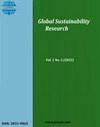孟加拉湾海上水合物开采设施研究与平台选择
引用次数: 0
摘要
由于几个原因,近海建筑被用于不同的位置和海洋深处。根据水深、气候条件、结构布置和新概念,需要不同的设备、平台和设计技术。海上建筑通常生产和运输石油、天然气和其他商品。孟加拉国尚未利用孟加拉湾的碳氢化合物潜力来开采石油和天然气。孟加拉国在海上油气勘探方面落后于印度和缅甸。50年来,孟加拉国的海上屏障没有带来任何好处。孟加拉国的经济受到高原油进口的阻碍。现在集中海上石油勘探寻找“黑金”。因此,需要一个海上结构。本文涵盖了所有近海系统的基本原理,拓宽了研究范围,并推荐了适合不同海水深度的平台,这些平台旨在为孟加拉湾预测的水合物建造。本文利用孟加拉湾的沉积和估计的水深来选择近海工程。该国的海上边界有26个石油和天然气区块。有11个在浅水区,15个在深海。据统计,这些块体位于大陆架和深水区。五个区域组成了孟加拉湾大陆架。F区陆坡延伸至深海区后分别为A-B、B-C、C-D、D-E、E-F海岸。C-D陆坡带水深64 ~ 106 m。因此,孟加拉湾大陆架适用于除该区域以外的所有永久性海上建筑。只有混凝土重力平台适合这个区域。我们需要在水中寻找石油和天然气的技术。让外国公司合作需要做很多工作。因此,技术人员应该致力于此,并鼓励政府或私营企业开发石油和天然气生产技术。本文章由计算机程序翻译,如有差异,请以英文原文为准。
Researching Offshore Facilities and Choosing an Appropriate Platform for Hydrate Extraction in the Bay of Bengal
Offshore buildings are used in various locations and sea depths for several reasons. Different equipment, platforms, and design techniques are needed depending on water depth, climatic conditions, structural arrangement, and new concepts. Offshore constructions usually generate and transport oil, gas, and other commodities. Bangladesh has yet to use the Bay of Bengal's hydrocarbon potential for oil and gas. Bangladesh lags behind India and Myanmar in maritime oil and gas discovery. In 50 years, Bangladesh's sea barriers have yielded no benefits. Bangladesh's economy is hindered by its high crude oil imports. Focus on offshore petroleum exploration to locate "black gold" now. Therefore, an offshore structure is needed. This thesis paper covers the fundamentals of all offshore systems, broadens the research, and recommends appropriate platforms for various sea-water depths, which those platforms are meant to be built for hydrates predicted in the Bay of Bengal. The paper uses the Bay of Bengal sedimentation and estimated water depth to choose offshore constructions. The country's maritime boundaries have 26 oil and gas blocks. There are 11 in shallow water and 15 in deep sea. According to statistics, the blocks are on the continental shelf and deep-water region. Five zones make up the Bay of Bengal continental shelf. They are shores A-B, B-C, C-D, D-E, and E-F after region F continental slope continues till the deep sea area. The continental slope zone C-D has 64-106 m water depth. Therefore, the Bay of Bengal continental shelf is suitable for all permanent offshore buildings except this zone. Only concrete gravity platforms fit this zone. We need the technology to search for oil and gas in water. It takes a lot of work to get foreign companies to work together. Thus, skilled people should work on it and encourage government or private businesses to develop oil and gas production technology.
求助全文
通过发布文献求助,成功后即可免费获取论文全文。
去求助
来源期刊

Global Sustainability Research
sustainability and environmental focus-
自引率
0.00%
发文量
0
期刊介绍:
Global Sustainability Research (ISSN: 2833-986X) is an Open Access journal dedicated to supporting the rapidly expanding area of global sustainability research. Global Sustainability Research Journal publishes original research and reviews which seeks to address and discuss ways to deliver sustainable development. Manuscripts submitted to Global Sustainability Research must address issues linked with the achievements of sustainability and sustainable development goals.
 求助内容:
求助内容: 应助结果提醒方式:
应助结果提醒方式:


